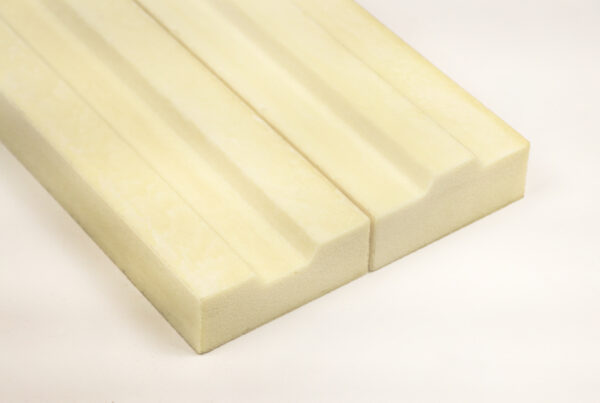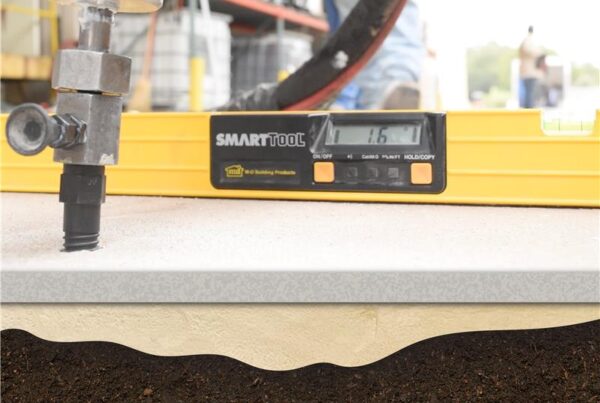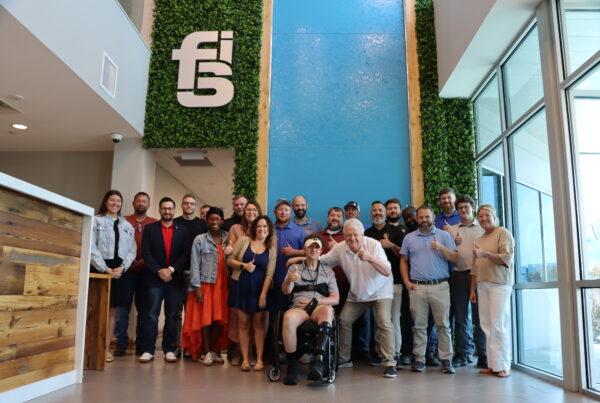FSI’s core values are innovation, sustainability and caring. In addition to being a global polyurethane systems and equipment provider, our goal is to meet the needs of the full spectrum of companies requiring our specialized services, no matter how small or varied. As a “systems house” we purchase large quantities of raw materials which our in-house Research and Development and Chem Teams custom-formulate to each client’s exact specifications, regardless of the size of the company or the order. Our team of technicians is always available to help, ensuring your entire line continues to operate smoothly.
Our concern for people and the environment always guides our choices, and as such we are honored to partner with Purcom, who, in collaboration with other like-minded companies, have developed a highly innovative product, a bio-polyurethane: PUGreen. As polyurethane is used so extensively across the board and typically tends towards high production costs and volatile emissions, to find a product with minimum negative environmental and health impact in addition to high sustainability (due to its use of renewable resources) at a lower total cost without compromising on performance quality, is outstanding.
PUGreen embodies our own vision and values with its diverse applicability across multi-faceted industries, combined with its highly competitive features and advantages, and illustrates the value generation FSI represents not only for the market but for our planet as well. Our commitment to versatility enables us to fill gaps in the market, at the same time as providing high quality, multi-functional products with maximum benefit.
PUGreen: a new bio-resin concept for composites processing
Purcom Química (Brazil), G12 Innovation (Brazil) and Composite Integrity – the composites branch of the Institut de Soudure Group (France) have developed a vegetable polyurethane (PU) resin compatible with many processes and applications. It offers a great value thanks to a low CAPEX to use it and exceptional features.
Petrochemical-based polyurethane resins used in composite materials reinforced with single or combined glass, carbon, aramid or natural fibres are not new. Polyurethanes are also known in the world of composites as cores for the production of sandwich-structure components that combine great rigidity, mechanical resistance and thermal and acoustic insulation. The use of polyurethane resin to replace polyester, vinyl ester and epoxy resins in the production of laminates using thermoset processes is a reality. High-pressure RTM and pultrusion are widely used in the automotive and railway industries to produce parts such as vehicle bumpers and pultruded sleepers for the railway industry. However, the growth of polyurethane resins as materials for thermoset composites has been limited due to the large investments required, for instance to acquire heated metal moulds and new equipment for RTM processes, or to adapt the existing equipment for pultrusion.
During the past five years, the Brazilian company Purcom Química – a globally-operating Latin-American leader in independent polyurethane systems with over three thousand formulas developed for different segments, processes and applications – developed a polyurethane resin system based on renewable sources for the composites sector: Pugreen. During the R&D process, Purcom worked in partnership with companies specializing in different composite processes and applications, as well as technology and research centres for the trials, certifications and validations. The companies selected to participate in this project were G12 Innovation (Brazil) and Composite Integrity, the composites branch of Institut de Soudure Group (France). The project’s purpose was to create a vegetable polyurethane resin that could be used in different processes and applications, requiring investments similar to the current high-performance resins and offering competitive features and advantages generating value for the market, for people and for the planet.
Challenges and opportunities
Among Pugreen’s major features, examined and validated by composites processors, are its innovative nature and the break with traditional concepts. One of the differences with traditional resins is related to the processing equipment. The RTM injection and infusion machines used are different due to the pressure, flow rate and mixing ratio of polyol resin and polyisocyanate hardeners. Another crucial point is that, for Pugreen to have a shorter cure cycle than current resins, the moulds need to be heated at temperatures between 50 and 60°C. In continuous lamination and pultrusion processes, the existing equipment needs to be adapted but at lower cost than the adaptations required for petrochemical polyurethane.
Another challenge and huge opportunity is to take greater advantage of the vegetable resin’s exceptional features, which make it possible, while respecting the required rigidity, to reduce the laminate thickness and, consequently, weight, keeping the same level of performance at a lower total cost. Difficulties do exist but this resin offers real opportunities and benefits to composites processors and users. For example, it is possible to have an industrial plant without volatile organic compound (VOC) emissions and, consequently, no solvent odours, which are characteristic in this sector. As Pugreen has zero shrinkage, no additives or fillers are required to minimize the effects of the exothermal reaction, which are different in each resin.
The low or zero shrinkage ensures high dimensional stability, which is important for products with precision assembly, and provides an excellent surface finish that drastically reduces the part preparation time for painting.
For example, the Pugreen low-shrinkage vegetable resin can be used to produce plates by continuous lamination with the same finish as stationary lamination but at lower cost. These two processes are used to produce plates for modular building panel systems, refrigerated trucks panels, visual communication, and internal and external cladding for the construction sector.
Positioning, market and processes
The Pugreen vegetable polyurethane resin is positioned to serve the mid- to high-performance application markets. The processes selected to start the product validation and certification process were RTM, infusion, continuous lamination and pultrusion.
The Pugreen versions for hot pressing (SMC) and filament winding processes are under development and should be available during the second semester of 2022.
The segments targeted to start using the resin were also carefully chosen. The strategy was to focus on segments with growth potential that seek high performance, innovative and competitive solutions together with sustainability, such as transportation (trucks and buses), construction (modular building systems and kits for wet areas (Figure 2)), telecommunications (poles and hybrid tow-ers), wind (Figure 1) and solar power (components and structures), water parks (Figure 6 – toys, waterslides and components), power transmission and distribution (modular sys- tems for different applications).
Features, advantages and performance
Main features of Pugreen resin:
- Based on renewable sources (vegetable) – Low carbon emissions
- Zero shrinkage
- Odourless
- Eliminates the use of solvents
- High mechanical performance (Table 1 & 2, Figures 3,4,5)
- Significant impact and fatigue resistance
- High elongation at break
- High heat deflection temperature (HDT) and glass transition temperature (Tg) – Differentiated curing system
- High adhesion to polyurethane cores
Main advantages in composite laminate processing:
- Shorter production cycles
- Reduced weight (low density)
- No VOC emissions
- Elimination of cracks during internal and external displacements
- Drastic reduction of painting preparation time
- Possibility to reduce thickness due to high performance
- Dimensional stability (resistance to different temperatures)
- Excellent surface finish (zero shrinkage)
Major projects and applications
Construction industry
Many projects and applications using Pugreen are under development, such as a mobile modular building system for classrooms and health centres that will primarily be produced and installed in the American market. The Pugreen vegetable resin was selected for this project due to its performance, surface quality, and because it is based on renewable sources. For the Indian market, modular kits are under development for bathrooms (floor, lining and walls) and a feasibility study is in progress for decorative façades and pipeline maintenance.Theresinwaschosenduetoits innovative nature and sustainability.
Transport
For transport applications, the focus was to certify the vegetable resin for use in truck roofs manufactured through the RTM process. The certification process is in progress and the results of the first comparative tests against the current resins were excellent (see below).
In this project, the assembler and the trans- former decided to use the Pugreen resin for the following reasons:
- Mechanical performance comparable to current resins
- Ability to reduce thickness, weight and total cost
- Reduction of the injection production cycle by 30%
- Good surface quality, reducing painting preparation time
- Production process without VOC emissions
- Low carbon emissions
To certify Pugreen, the assembler chose to optimize the process, beginning by the most critical trials: bending strength and flatwise tensile strength. Test specimens from two production parts, one manufactured in Brazil and the other one in Europe, were used. One of the roofs was produced with the resin used and approved in Europe (epoxy), the other one with the resin approved in Brazil (vinyl ester). The third one was produced with Pugreen vegetable resin. Other materials were tested following the same formulation as fibreglass mat reinforcement with a polypropylene core and polyurethane foam among the composite laminates.




